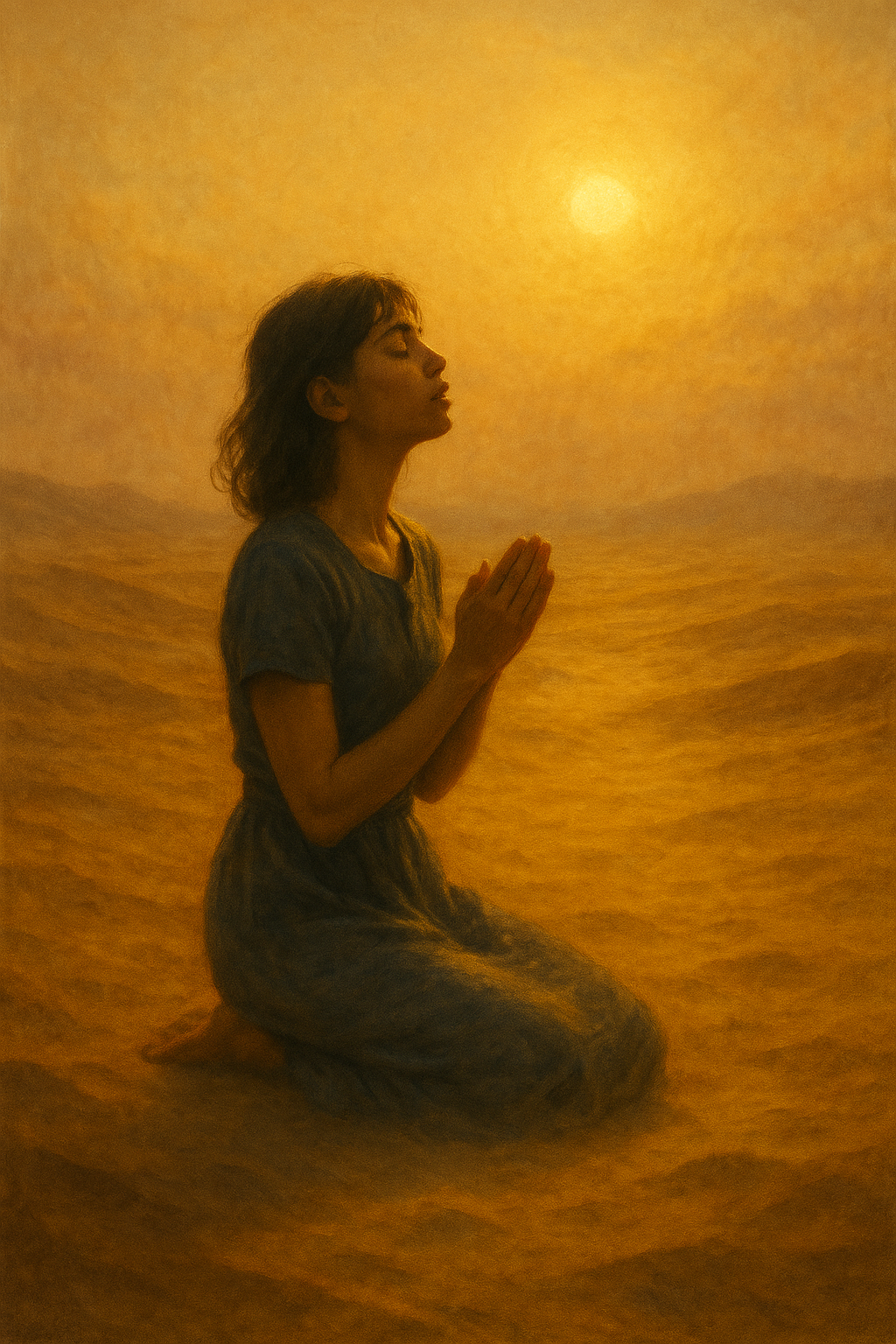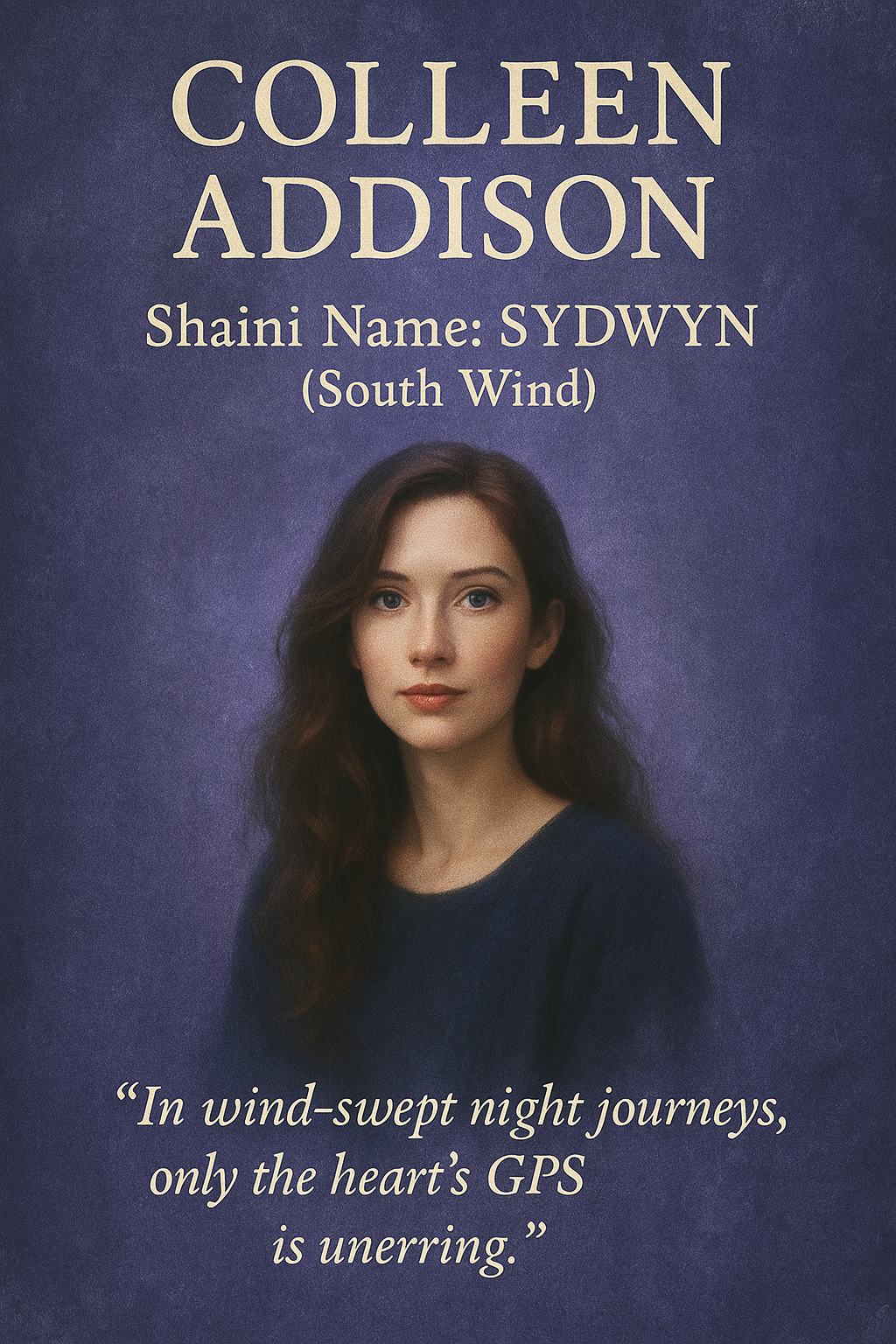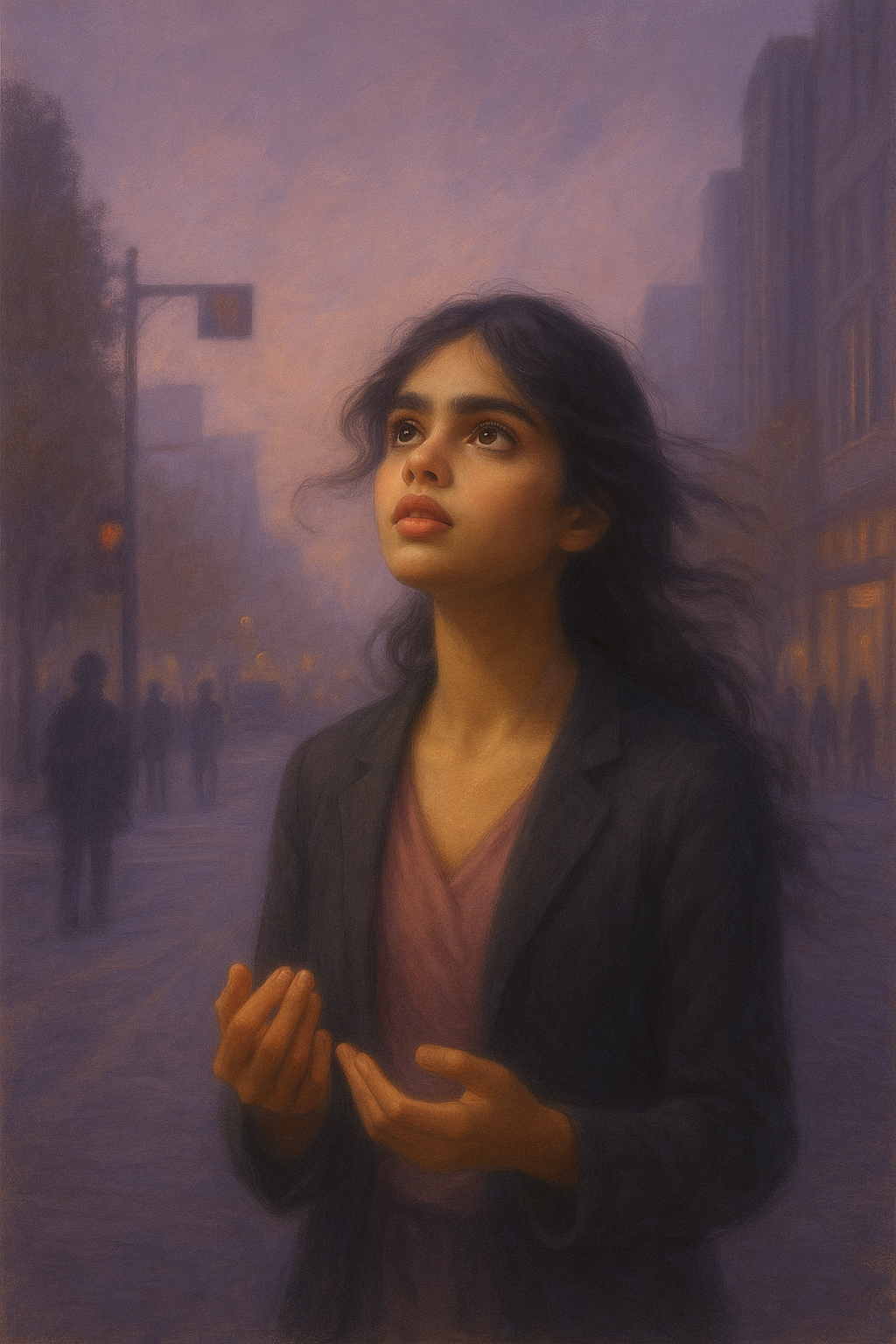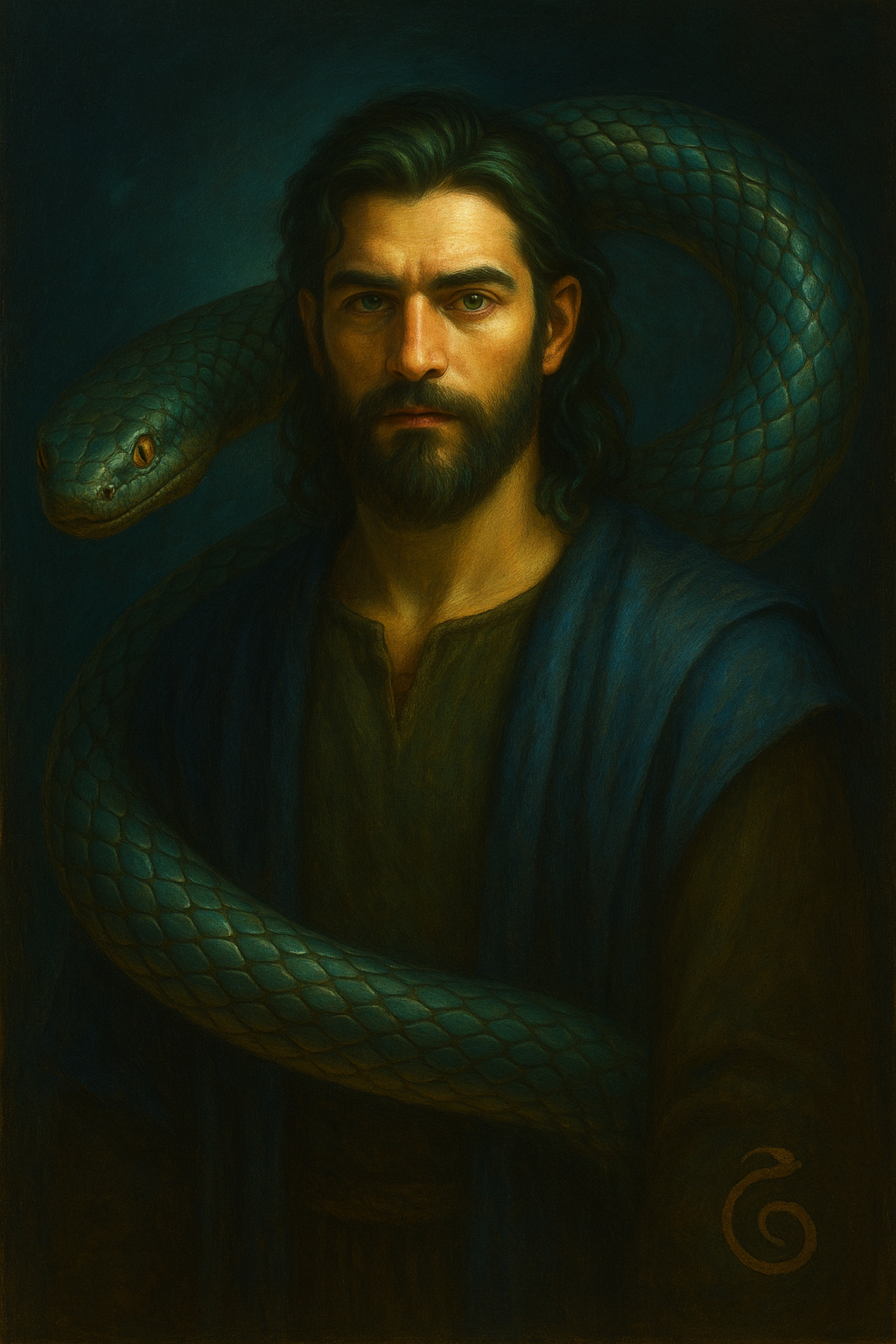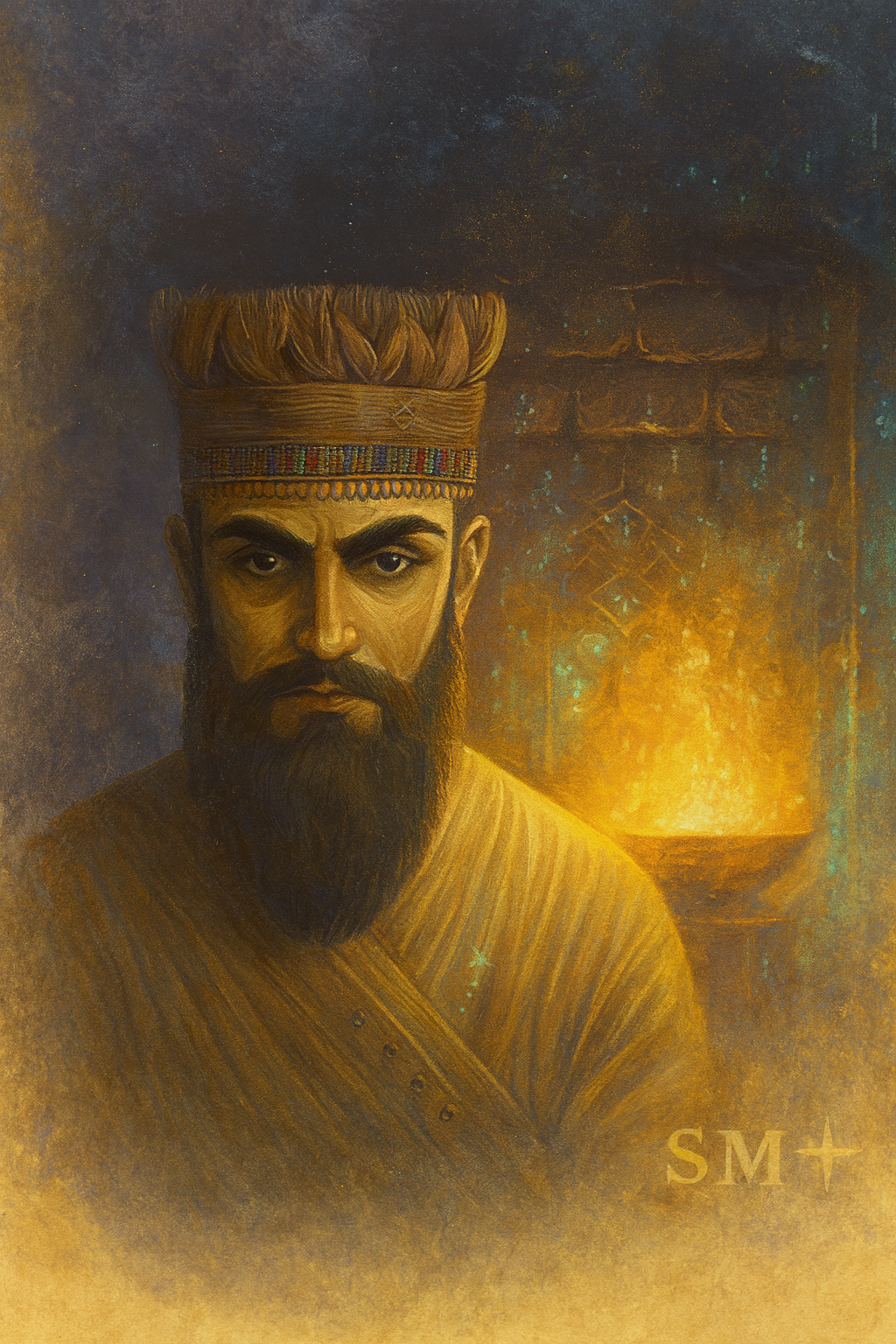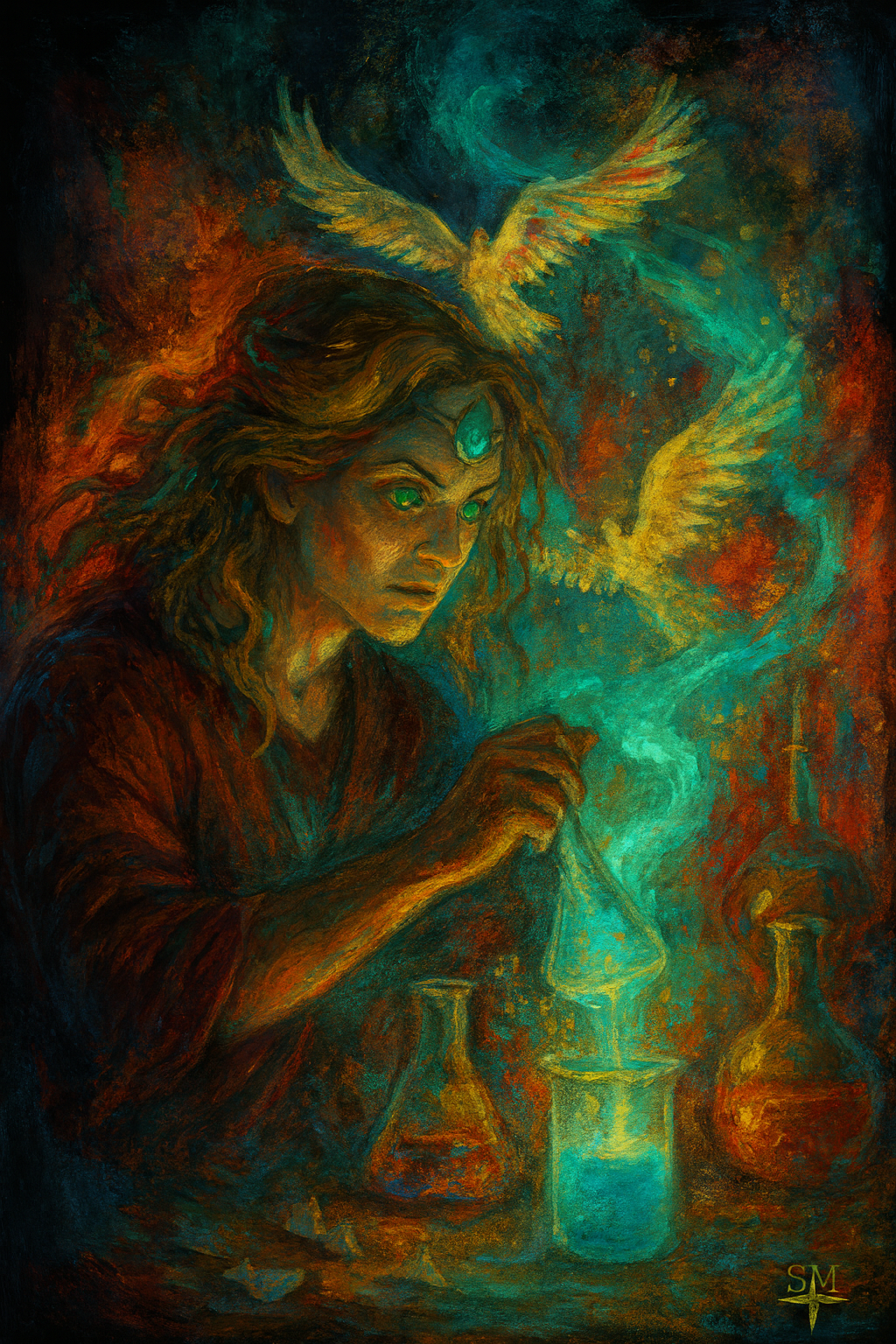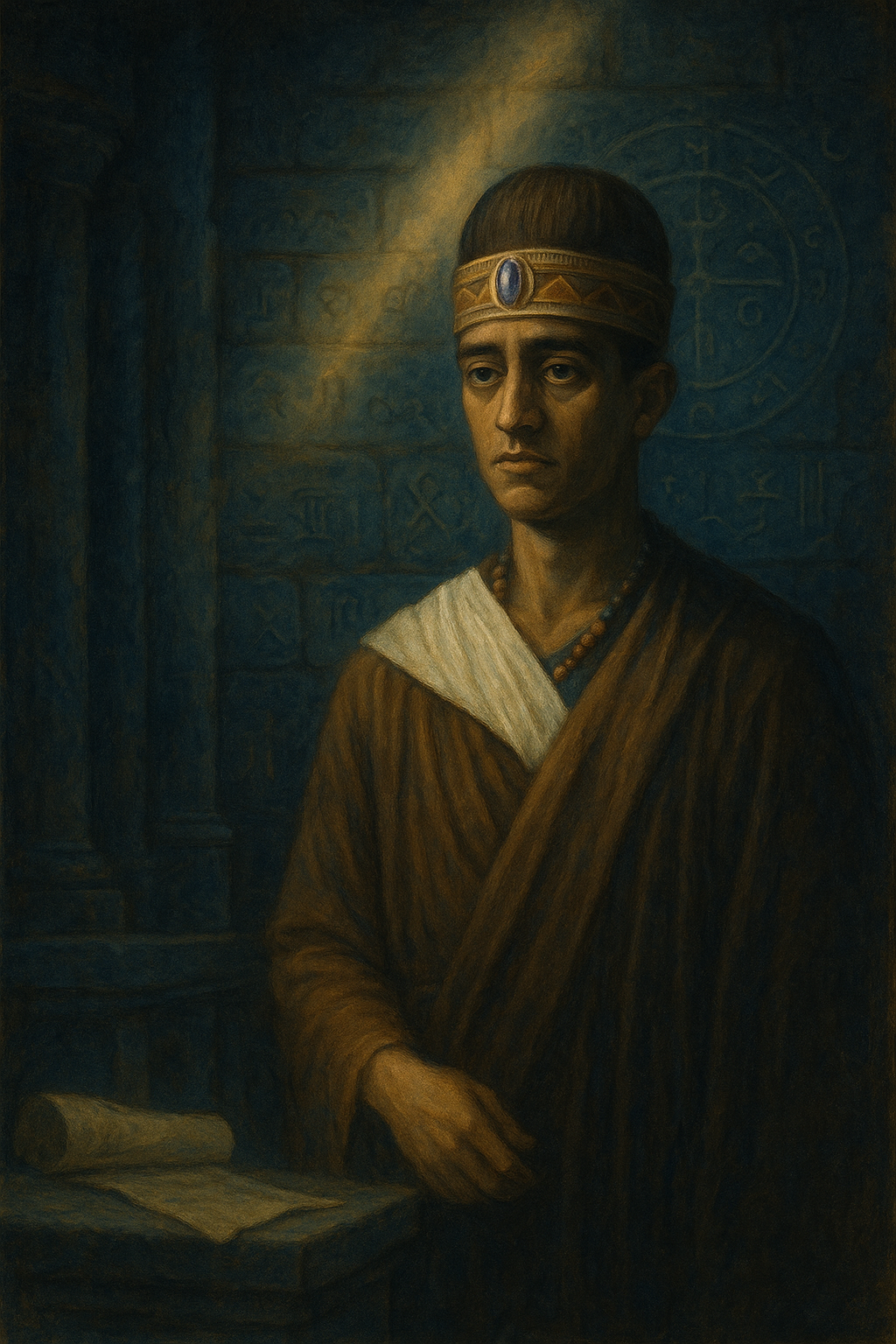
The Dreamers’ Codex
Field notes from Ophia: souls, places, vows, and wounds.
These pages are a living record of the dreamers who walk between the Veils, the powers that hunt them, and the places where our world and Ophia lean towards one another. This Codex continues to evolve, as the story it recounts is still being lived.
The crossing can’t be made by any single soul. It moves like a living body: coil and surge, gather and strike.
Esperidi is the inward coil, the listening tension before a breach.
Ashangtu is the forward thrust, the fire that won’t wait to be permitted.
Wakeen — Jormada — names the rhythm and keeps the movement from tearing itself apart.
This is Sarpienta’s way: not an idol below the earth, but the motion of the earth itself, moving through all of us.
Part One: The Wakeful Dreamers
The core souls at the heart of the myth…
Esperidi Mon-Sequana
Erawen, the Raven
Aspect: Air
Known For: Carrying messages between worlds, even when she’s unaware of doing so.
Esperidi walks the desert listening for messages carried on the wind. She insists she’s ordinary; Ophia disagrees.
Some call her Erawen, the Raven. Raven’s beak captures lost light and carries it home.
Esperidi became a Wakeful Dreamer with scant training. She was not sworn to any Order; by the time she came of age, no Order existed. But she had to trust her inner voices to survive. And she heard another voice, one from across the Veils, which she could not bear to ignore...
“I will not leave you alone in the dark.”
✴
Colleen Addison
Sydwyn, the South Wind
Aspect: Air & Moon / Spirit
Known For: Speaking truth in places where truth is forbidden.
Colleen’s world is first seen drenched in hospital light, sleepless corridors, and the slow ache of constantly being told, “It’s all in your head.” She writes to weave a way through a labyrinth her doctors and family don’t understand. She listens to her dreams because no one in daylight will listen to her.
The South Wind moves quietly and lifts the hearts of those whom it touches. “Shai-win kisses the land,” they say in Ophia. When Sydwyn speaks, the partitions between worlds are blown aside.
Colleen is not fragile. She carries more than one lifetime’s worth of memory.
✴
Ashangtu Lanore
Sajna, the Fire of Creation
“You ought to know by now that fire is seldom a gentle teacher.”
Aspect: Fire
Known For: Carrying a light that can both heal and unmake.
Ashangtu is not safe light. She is not candle comfort. She is ignition. She was offered up, admired, used — sanctified in public and sacrificed in private. Her gift is to open herself to forces that burn through lies. Her curse is that everyone around her wants to guide that fire toward their own ends.
People look at her and see salvation. No one asks what it feels like to be the match.
They told her she was chosen.
They didn’t tell her “chosen” meant “consumed.”
Some lights are meant to guide. Hers was meant to be harvested.
✴
Wakeen Mon-Shetain
Jormada, the Serpent Speaker
“The world moves in waves. You’re not breaking. You’re part of the motion.”
Aspect: Earth / Rhythm
Known For: Naming the motion that does not break but sustains.
Wakeen doesn’t burn like Ashangtu. He doesn’t ghost through danger like Esperidi. His gift is older, quieter, and harder to explain to people who’ve never felt it: He can sense the rhythm we’re all caught inside, and name it.
He says, “This isn’t madness. This is how a living body moves. Coil, then drive. Hold, then strike. Endure, then surge.”
He calls that pulse Sarpienta’s Way. This is the guiding rhythm: as Above, so Below. Wakeen understands the cost of every motion and the necessity of every part of the pattern. The serpent coiled at his shoulder suggests that Ophia Herself has chosen to speak through him.
✴
Part Two: ✴ The Unravelers
Three Faces of the Lost Light
Something ancient and precise has fallen off its axis. The sacred geometry has cracked.
The Dreamers’ Crossing is a journey towards awakening. That awakening sheds light—light that sometimes draws attention from the forces that seek to fix the world in their own image. These are the dreamers who refused to awaken…
It’s a mistake to call these three shadow devotees comrades. They are currents in the same dark river — each embodying a wayward distortion, a misunderstanding of the light they seek.
It’s a mistake to call them evil. They are lost to the light. They are each fragments of a single thwarted virtue — faith, intellect, and creation — sundered from the heart.
✴
🜂 Jain-Toh, the Sovereign Priest
Sacred power ossified; the golden light of faith frozen into marble. Sanctity turned to stone.
Once he sought communion; now he seeks only to control the light that once revealed him.
His word is law carved in rock, the voice of a god he no longer hears.
He prayed until something in the darkness and silence answered.
The fire in his sanctum burns without smoke, without scent — immaculate cold. His temples shine, but the stars above them have gone dark.
🜄 Karia, the Alchemist of Unmaking
Creation unmoored; curiosity crossing into sacrilege. Beauty corrupted by heartless brilliance; empathy eclipsed by fascination. Wonder gone astray; the beauty and peril of boundless creation. Light spills from her experiments like unbound life force.
She lives at the dangerous intersection of brilliance and unraveling—the chaos of a psychic fracture that sometimes shatters the cask of priestly rigidity; creation breaking its own frame. She’s both visionary and unraveler — her genius glows like unstable light in a lantern that can’t contain it.
And the light in her own eyes feels alive, conspiratorial — as though her ideas have grown tongues that whisper back to her from the shadows. Those emerald eyes see too much, too often— the price of genius and forbidden wonder.✴
✴
🌒 Konatep, the High Priest
Devotion without wonder, living on the quiet, desperate hinge between control and collapse. If Jain-Toh is faith’s overreach, Konatep is thought’s imprisonment. Though bathed in light, his illumination is narrow and unyielding. Not freeing, but confining. His domain is rigid order — the architecture of fanaticism. His doctrine is precise, austere…flawless cold.
Jain-Toh and Konatep— the fire that blinds and the reason that imprisons.
This Codex is being copied by candlelight. New entries will be added as the Veils thin.
